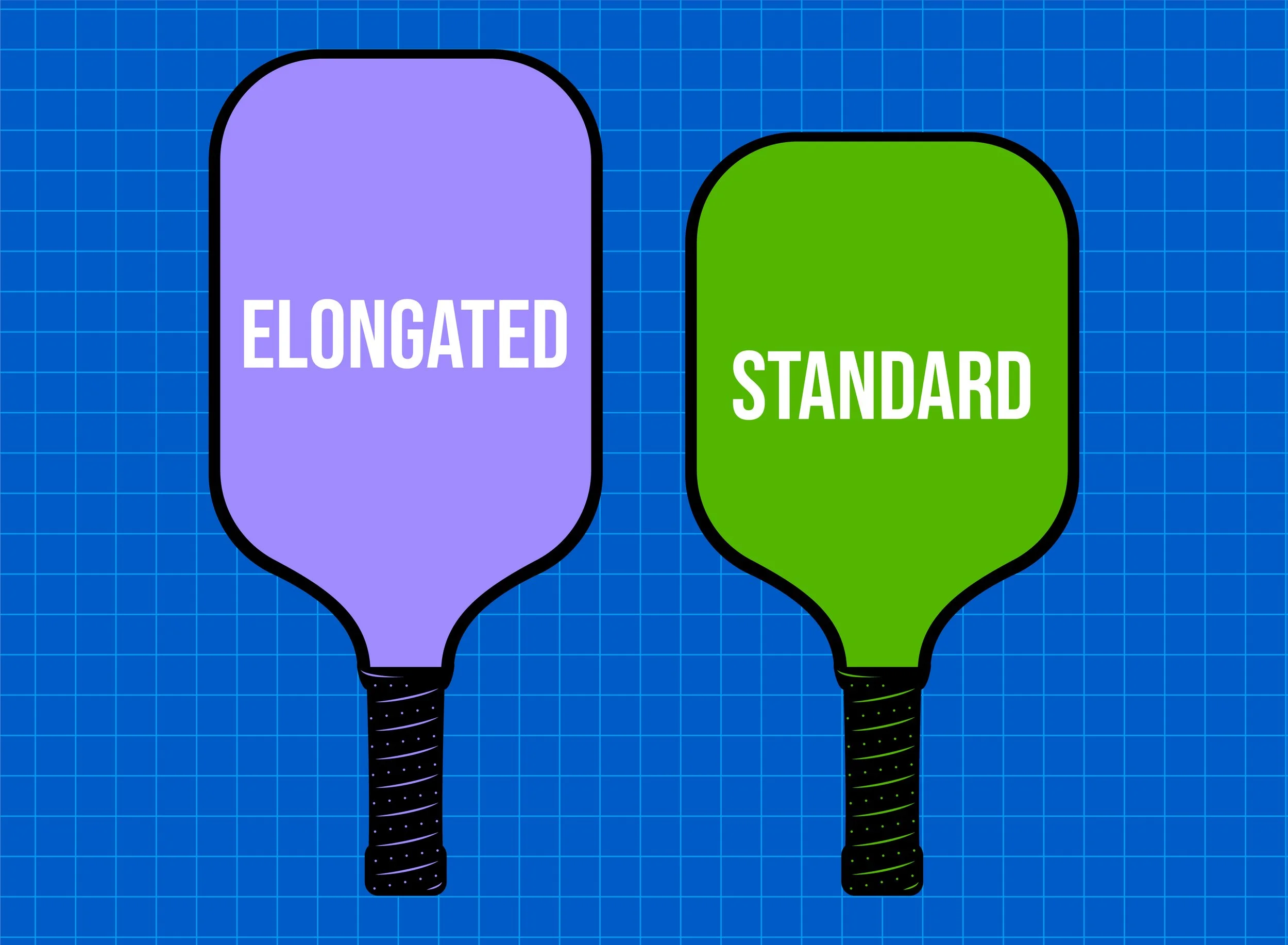The 5 Key Differences Between Pickleball & Tennis
Pickleball has probably caught your attention by now. Perhaps someone has tried to persuade you to try pickleball if you are a tennis player. How do these two sports differ? This article will focus on these differences (and may even attract some tennis players in the process).
1. The Type of Ball
A pickleball is light and bounces lower than a tennis ball.
Tennis players' first reactions to how pickleballs bounce is always funny. They look dazed and bewildered. Pickleball bounces so low that they're not used to it.
Tennis balls are bouncy, large objects. Upon striking, or while dropped, the rubber core inside the ball compresses. This is what causes the ball to bounce. This is expected in tennis.
Conversely, pickleballs do not bounce high since they lack a core. Pickleballs are made of hard plastic which can be delicate. They are not rubber, don't compress, and don't rebound very high.
Generally speaking, there are two kinds of pickleballs. The Dura 40 is an outdoor ball while the JUGS ball is an indoor ball. Since pickleballs are essentially just wiffle balls, they are easily affected by the wind. As a result, outdoor balls require much smaller holes to remain effective. The wind is less likely to affect the balls this way.
2. Pickleball Uses Paddles & Tennis Uses Racquets
To lovers of the respective sports, tennis racquets and pickleball paddles make beautiful sounds. Tennis racquets and pickleball paddles differ drastically, however.
Playing pickleball requires a paddle half the length of a racquet, which is rectangular in shape and has a shorter handle. A pickleball paddle is typically thought of as just an oversized ping pong paddle. That's pretty accurate, but it's not that simple.
These two sports instruments should be considered for more than their size and shapes alone. Pickleball and tennis are so different in terms of performance that you simply can't compare them.
A tennis racquet compresses into a ball when you strike it with a tennis ball, causing the strings to bend slightly to accommodate the ball. Pickleball does not have this reaction. There are no strings on a pickleball paddle, and pickleballs don’t compress. The paddle will pop off as soon as you strike and will deflect, not compress, when you strike a pickleball.
The other difference between tennis racquets and pickleball paddles is the core of the pickleball paddle. Most pickleball paddles today are composites. Composites are pieces or parts that combine to create one thing.
There are three main components of a composite paddle: the core, the face, and the edge guard. Cores are not just solid materials. As a result, cores of paddles are constructed in honeycomb shapes to make them lighter (between 7 oz and 8 oz). They are hollow on the inside with a honeycomb pattern. The result is a material that is solid and strong, but not too heavy. This is surrounded by a smooth striking surface and edge guard.
3. The Pickleball “Kitchen”
In other words, the "non-volley zone" is called the kitchen. While in this zone, you are not allowed to volley the ball. This means no hitting the ball out of the air that has not yet bounced.
Pickleball doesn't allow you to stand at the net and hit the ball over. This is due to the small court size. The original founders of the sport realized early on that this was a serious issue back in the 1960s when it was created.
From the net backwards, there is the non-volley zone. Both sides are covered with a 7-foot-deep non-volley zone. Although technically it is called the non-volleyball zone, everyone refers to it as the kitchen.
It's a simple rule. A player cannot stand in the non-volley area and hit a volley. Shots like these are often the difference between players winning and losing.
This makes the sport actually playable with the non-volley or kitchen rule. Pickleball is distinguished from other racquet sports by the kitchen. Pickleball would not exist without the kitchen.
4. Court Size Differs Greatly
Pickleball courts are smaller than in tennis. People often say that pickleball courts are too small or seem miniature in some way. That's totally true if you're a tennis player. With the dimensions only coming in at 20′ x 44′, you may recognize these numbers from badminton. Indeed, on the badminton court was where pickleball was originally invented.
In comparison to tennis, pickleball is much smaller. Also consider that pickleball is mostly played by doubles. A court this size is quite small for four players.
There is also a significant reduction in the net. My mind is always blown when I look at tennis nets because in comparison, they look enormous.
Pickleball nets may look small, but don't be fooled by their appearance. Getting the ball over the net is just as challenging as in tennis. When you can't move the ball, it can be really frustrating because the court and net is so small.
5. The Double Bounce Rule
And finally, there’s the double bounce rule (which does not exist in tennis).
The name of this rule is a little misleading. In fact, it means something entirely different. It shouldn't be forgotten that if the ball bounces twice, it's game over! This is a very important rule.
Basically, this rule applies to the first shots of the game. After the serve, a ball must bounce once and then again after the return according to the double bounce rule.






